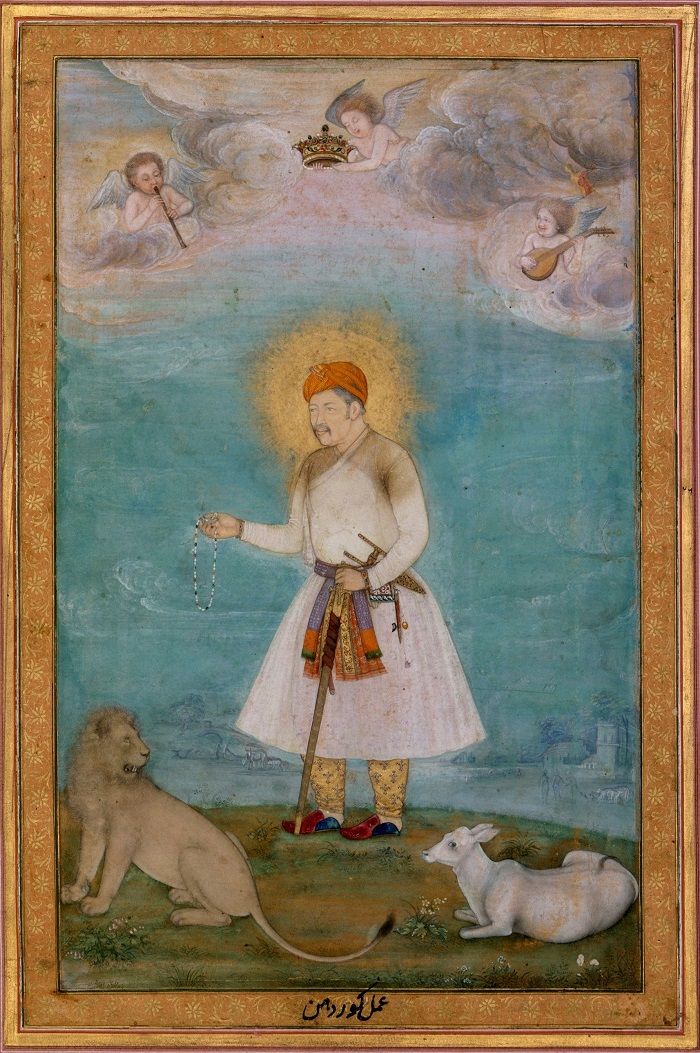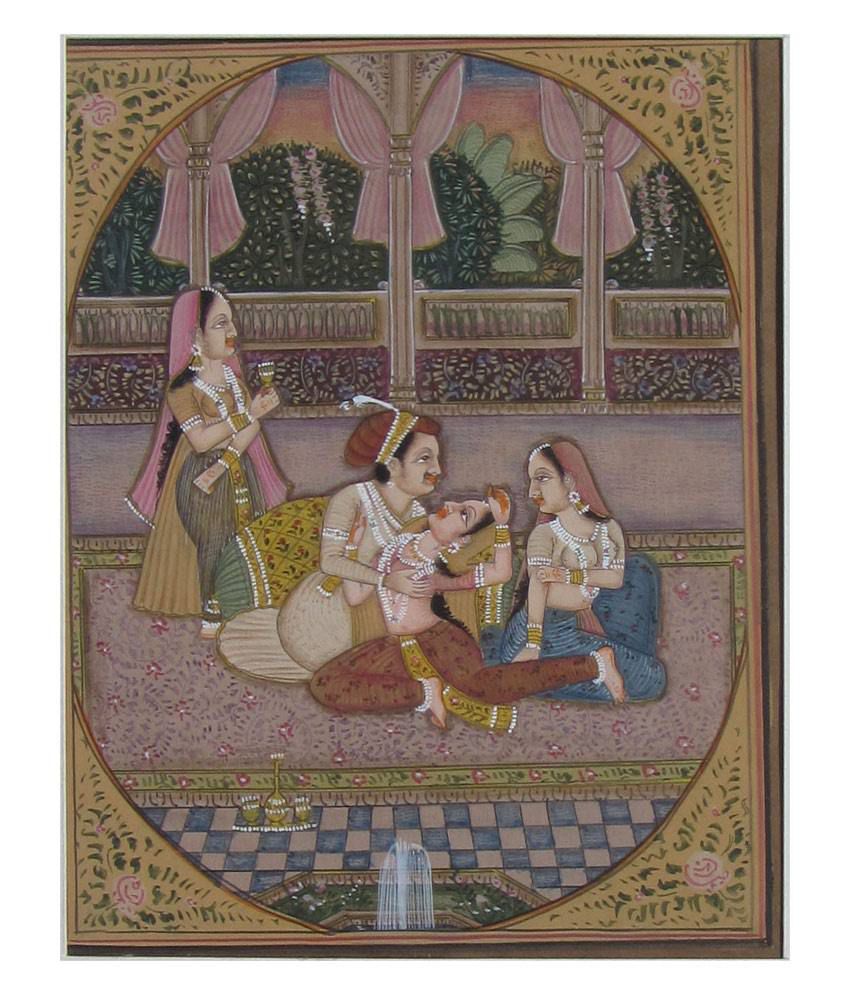Mughal Paintings. The paintings often revolved around themes like battles. Generally made as miniatures either as book illustrations or as single works, Mughal painting evolved from the Persian school of miniature painting with Hindu, Buddhist and Jain influences.

These paintings evolved during the rule of various Mughal Emperors in India. The credit for the development of Mughal painting goes to Akbar and Jahangir. Handwritten books and poetry were decorated with patterns, borders, and small, detailed paintings called miniatures.
These paintings evolved during the rule of various Mughal Emperors in India. These kinds of paintings are called a style of South Asia which is confined to miniature and can be found as some single or group work and book Illustrations. The Mughals descended from a lineage of formidable conquerors such as Genghis Khan and Amir Timur.
Maryam Mughal is an artist from Islamabad, Pakistan. " Since a child, the air in front of me was the canvas and I was brushing it with colors of my thoughts. In its early stages, it owed a debt to the Safavid style of Persian painting, but it quickly departed from. Miniature paintings made as either book illustration or as a single works.
One day I did it on paper and the world around me said, wow, since than I was titled as a natural artist and my hands itch to create more art to beautify life around me.
Mughal painting during Akbar: Under his orders 'Humayunama' was illustrated.
Mughal paintings are a great mixture of Indian art, Turkish art, and Persian Artform and oil paintings. These paintings evolved during the rule of various Mughal Emperors in India. These paintings evolved during the rule of various Mughal Emperors in India.
The Mughal style evolved as a result of a happy synthesis of the indigenous Indian style of painting and the Safavid school of Persian painting. The range of distinct mughal paintings — often made from paper, fabric and paint — can elevate any home. Hence the royal families, natural scenes, wars, animal fights, hunting, royal processions, etc. were painted in the paintings of this period.
Its aims and standpoint are secular and realistic: it is interested in passing events, and most typically in the exact delineation of individual character in the portraiture of men. Mughal paintings and architecture are part of the Indo-Islamic style. These paintings evolved during the rule of various Mughal Emperors in India.
Mughal painting is a particular style of South Asian, particularly North Indian (more specifically, modern day India and Pakistan), painting confined to miniatures either as book illustrations or as single works to be kept in albums (). These paintings evolved during the rule of various Mughal Emperors in India. Mughal Painting The Mughal school of painting has steadily gained recognition as a distinctive style of painting which had a rich tradition to fall back upon, and which reached full maturity during the seventeenth century. selfstudyhistory.com It created a living tradition of painting which continued in different forms in different parts of the country long… The tradition of Mughal miniature painting would continue in northern India, at courts both great and small, up to the British conquest in the late eighteenth century.
These Mughal paintings flourished during the reigns of Akbar, Jahangir and Shah jahah. This significant period with several rulers brought about a diversity in art styles and designs. Mughal style is evolved from Persian Miniature painting style, so.
These painting plays important medium to narrate the tall tales of Mughal emperors.
The paintings often revolved around themes like battles.
These paintings evolved during the rule of various Mughal Emperors in India. The Mughal emperors were Muslims and they. Akbar, for instance, was more interested in illustrating books.
The Mughal emperors were Muslims and they. The Mughal painting evolved from the Persian school of miniature painting with Hindu, Buddhist and Jain influences. The paintings often revolved around themes like battles, legendary stories, Hunting scenes, wildlife.
Due to the king's varied interests and successors, one can see such variety in Mughal art. These paintings evolved during the rule of various Mughal Emperors in India. Miniature paintings made as either book illustration or as a single works.
Miniature Paintings of the Mughal Empire. They have developed in the patronage of the Mughals. The range of distinct mughal paintings — often made from paper, fabric and paint — can elevate any home.
These paintings evolved during the rule of various Mughal Emperors in India. In its initial phases it showed some indebtedness to the Ṣafavid school of Persian painting but rapidly moved away from Persian ideals. Maryam Mughal is an artist from Islamabad, Pakistan. " Since a child, the air in front of me was the canvas and I was brushing it with colors of my thoughts.
These works are called illuminated manuscripts and they provide us with lots of information about the Mughal court.
The Mughal period is associated with a growth in beautiful art and architecture.
The Mughal miniature was typically destined for a place in a book or an album. The range of distinct mughal paintings — often made from paper, fabric and paint — can elevate any home. Hence the royal families, natural scenes, wars, animal fights, hunting, royal processions, etc. were painted in the paintings of this period.
Miniature paintings made as either book illustration or as a single works. It is marked by supple naturalism based on close observation of nature and fine and delicate drawing and is primarily aristocratic and secular. Akbar, for instance, was more interested in illustrating books.
The arts of the Mughal Empire. These paintings evolved during rule of various Mughal Emperors in India. Due to the king's varied interests and successors, one can see such variety in Mughal art.
There was no painting related to religious.
These paintings also became an important medium to narrate the tall tales of the Mughal.
These Mughal paintings flourished during the reigns of Akbar, Jahangir and Shah jahah. The range of distinct mughal paintings — often made from paper, fabric and paint — can elevate any home. The Mughal empire spanned across modern-day India.
In either case, the term miniature is deserved, since even the larger compositions were bound into. Moghul Empire Art Shah Jahan Mumtaz Mahal Handmade Mughal Miniature Painting Painting. Mughal painting is a particular style of South Asian, particularly North Indian, painting confined to miniatures either as book illustrations or as single works to be kept in albums.
Mughal painting is seen as a dramatic episode in the history of Indian art for it is divergent from the expression of Hindu thought, and yet distinctively Indian. This significant period with several rulers brought about a diversity in art styles and designs. The paintings often revolved around themes like battles, legendary stories, Hunting scenes, wildlife.
Miniature paintings made as either book illustration or as a single works. That was deemed as only the thing of the court. Mughal painting is seen as a dramatic episode in the history of Indian art for it is divergent from the expression of Hindu thought, and yet distinctively Indian.



















